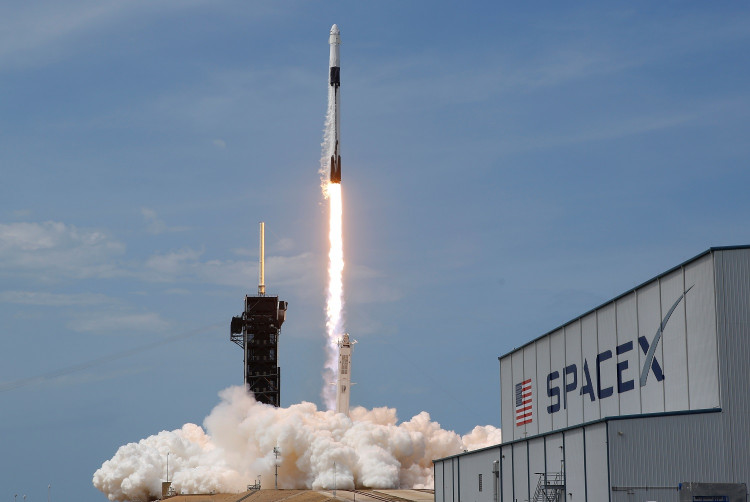SpaceX fired another rocket from Florida this evening but this spacecraft has followed a somewhat different direction from other East Coast flights. Instead of going eastward after takeoff as most Florida flights do, SpaceX's Falcon 9 rocket turned south after liftoff, sidestepping the southeast coast of Florida and flying over Cuba.
That's because this flight, coincidentally SpaceX's 100th launch, was going to what's known as a polar orbit - a route that mostly passes north-to-south over the poles of the Earth. It's a kind of mission that you usually don't see coming from Florida. This will, in fact, be the first time since 1969 that a rocket is going south from Florida.
Up to this point, most of the polar launches in the U.S. have occurred from the southern coast of California. That way, as they head south, the rockets fly over the open ocean and not overpopulated land. Rockets that depart from Florida go east toward the equator, so they also travel all over the open ocean until they get into space.
But back in 2016, the Air Force started to discuss the potential to take polar launches to Florida as wildfires occurred substantially close to Vandenberg Air Force Base, the US's largest launch site for all polar launches in California. According to Florida Today, the fire caused damage to nearby facilities and postponed one launch for up to two months. The 45th Space Wing, which manages launches from Cape Canaveral , Florida, ran the numbers and found it possible to make polar launches, but with some limitations.
And because of how their Falcon 9 rockets are made, only SpaceX can fly the specific path from Florida. The company's rocket has an automated flight safety feature, which ensures that if the spacecraft strays off its course or something goes wrong, it will self-destruct on its own - without input from the ground.
It is expected that future vehicles will fly with these autonomous safety mechanisms which will also enable them to fly south from Florida. But until then SpaceX is the one that takes polar launches back to the coast of Florida. The company's Falcon 9 rocket took off from SpaceX 's Cape Canaveral Air Force Station launch site at 7:18PM ET. The rocket then moved south, combing near Miami on the southeast coast of Florida and then soaring over Cuba.
SAOCOM 1B was the main satellite on this mission, while two tiny satellites were hitching along for a trip. SAOCOM 1B is the second of two similar Earth-observing satellites ordered by SpaceX to fly for the Argentine space agency. Together, the two satellites will use radar to watch the world search for disasters that could interfere with sectors including agriculture, mining, fishing, and more.




